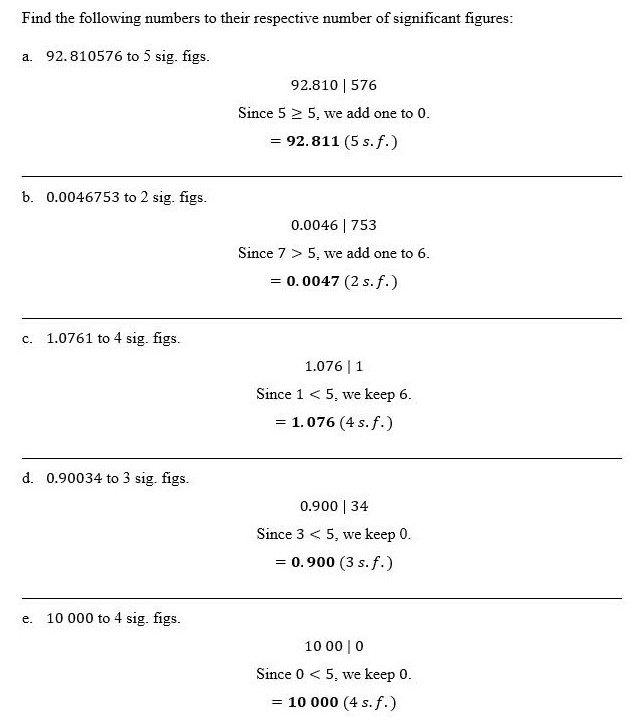CSEC Physics Syllabus - Effective for examinations from May - June 2015
Section A - Mechanics
Measurements
Specific Objective 1.6
express the result of a measurement or calculation to an appropriate number of significant figures;
Section A - Mechanics
Measurements
Specific Objective 1.6
express the result of a measurement or calculation to an appropriate number of significant figures;
 |
| Pixabay |
Let us begin with an example:
Taken from a news report in 2016; the population of Dominica was 74 000 people. My friend, who is Dominican and lives in Dominica, mentioned, that the population in 2016 was actually 73 543 people. Both values are correct but to a different degree of accuracy.
The number 73 543 may be a more precise value of the population of Dominica in 2016 but when we round off 73 543 to 2 significant figures, we get 74 000 people.
How is this done?
The first non-zero digit, reading from left to right, is the first significant figure. In the example below, this is number 7. If we continue counting from left to right the second significant figure will be 3. Since we want our number to 2 significant figures we place our 'significant line' after our second significant figure.
73 | 543
The line between 3 and 5 is called the significant line.
The SIGNIFICANT LINE is used as follows:
- We look to the digit to the right of the significant line; in this example, that digit is 5.
- We then ask ourselves, is this number greater than or equal to (≥) five (5).
- If the number is greater than or equal to five, then we add one (1) to the digit on the left of the significant line.
- If the number is not greater than or equal to five, then the digit on the left of the significant line will remain as is.
- The final step is to replace the remainder of the significant digits with zeros. (This is done to maintain the place value of the significant figures and the measurement as well.).
74 000 (2 sig. figs)
The convention for writing significant figures is as follows:
- sig. figs.
- s.f.
Example 1:
Note: A more precise measurement has more significant figures than a least precise measurement.
Rules for Zeros and Significant Figures:
- Trailing zeros in a number are not significant. They are present to hold the place value of the number.
Example: 925 000 ⟹ 9, 2 and 5 are significant and the zeros are not. - Leading zeros in a decimal are not significant. They are present to hold the place value of the decimal.
Example: 0.000017 ⟹ 1 and 7 are significant and the zeros are not. - The zeros between whole numbers are significant.
Example: 220.016 ⟹ Each figure is significant, there are 6 sig. figs. in the number. - The final zero(s) in a decimal is significant.
Example 1: 8.30 ⟹ Each figure is significant, there are 3 sig. figs. in the number.
Example 2: 0.15000 ⟹ Each figure is significant, there are 5 sig. figs. in the number.
Example 2:
Empowerment Through Practice!
Test your knowledge and Attempt Quiz 1.






0 Comments